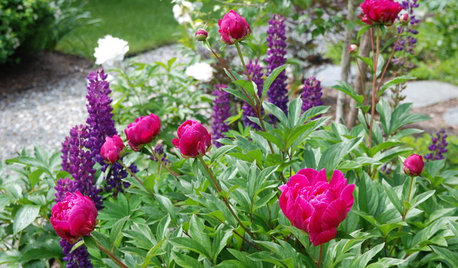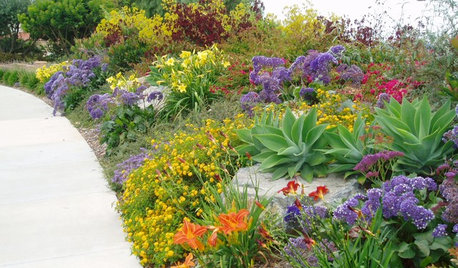straw or hay bale gardens?
Deb35
22 years ago
Related Stories

GREEN BUILDINGWhy You Might Want to Build a House of Straw
Straw bales are cheap, easy to find and DIY-friendly. Get the basics on building with this renewable, ecofriendly material
Full StoryGREEN BUILDING11 Reasons to Live in a House of Straw
Don’t be fooled by the old folk tale. Straw bales are a strong, functional and good-looking building material
Full Story
GARDENING AND LANDSCAPINGBuild a Raised Bed to Elevate Your Garden
A bounty of homegrown vegetables is easier than you think with a DIY raised garden bed to house just the right mix of soils
Full Story
EDIBLE GARDENSSummer Crops: How to Grow Tomatoes
Plant tomato seedlings in spring for one of the best tastes of summer, fresh from your backyard
Full Story
SPRING GARDENINGSummer Crops: How to Grow Strawberries
Pluck your own sweet strawberries right from the garden vine for smoothies, salads or eating then and there
Full Story
GARDENING GUIDESGet on a Composting Kick (Hello, Free Fertilizer!)
Quit shelling out for pricey substitutes that aren’t even as good. Here’s how to give your soil the best while lightening your trash load
Full Story
GARDENING GUIDESLessons in the Rewards of Selfless Gardening
Let go of gardening for your own vision and watch the garden’s own true vision come forth
Full Story
FARM YOUR YARDHow to Grow Vegetables in Containers
Get glorious vegetables and fruits on your patio with a pro’s guidance — including his personal recipe for potting mix
Full Story
REGIONAL GARDEN GUIDESDelight in Summer’s Garden Glories — Here’s What to Do in June
Wherever you live in the United States, these guides can help you make the most of your summer garden
Full Story
GARDENING GUIDESTexas Gardener's June Checklist
Win the battle against heat and drought with these plant picks and extra effort, for a garden that reigns supreme in summer
Full StorySponsored



westbeck35
stuschreib
Related Discussions
Anyone tried straw bale gardening?
Q
Straw Bale Gardening
Q
New here - Hay Bale Gardening
Q
Hay Bale Gardening
Q
hunter_tx
Gail_Hall
clynnta
ecdc
cherylm
CindyBelleZ6NJ
vmperkins
CindyBelleZ6NJ
moonwolf23
swanzeyguy
auditeez
Old_West_Aussie
fadoodle
tony_k_orlando
Old_West_Aussie
tony_k_orlando
Old_West_Aussie
nifka
tony_k_orlando
mstaley3000
tony_k_orlando
mstaley3000
mstaley3000
mstaley3000
downeastwaves
swanzeyguy
tony_k_orlando
tony_k_orlando
swanz
tony_k_orlando
swanz
tony_k_orlando
wichitarick
tkctwbd
wisecrone13
organic-enid
mom23840
tlouise
User
cyrus_gardner
mom_heather
buckeyebluebell
murkey
wildewood
tomatolady_awesometomatoes_com
hondo99999_aol_com
gardensheriff_gmail_com
oliveoyl3